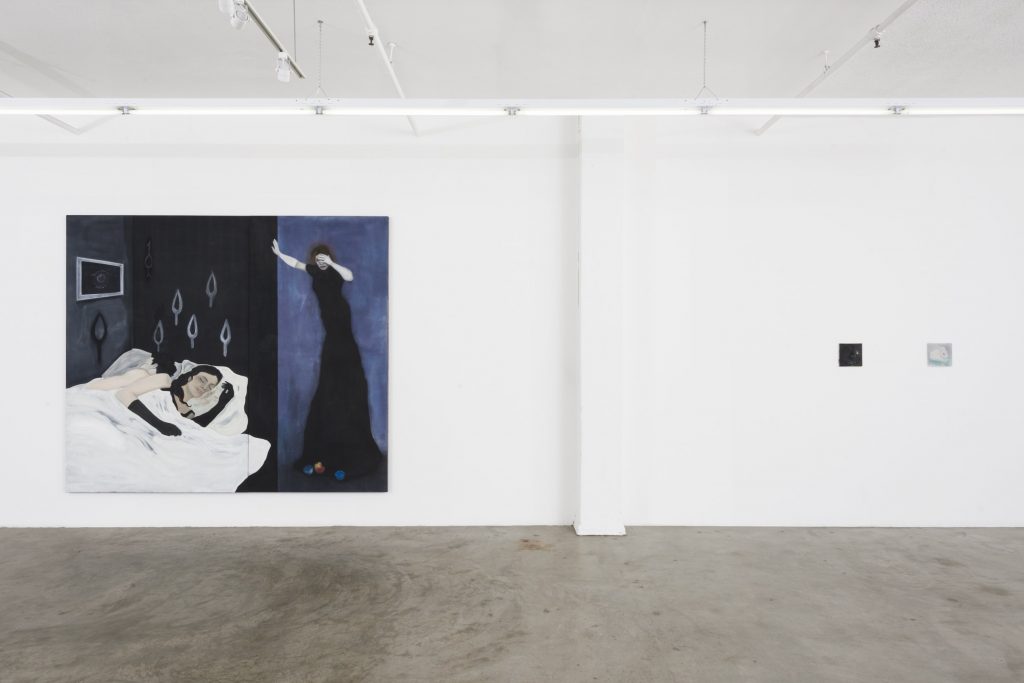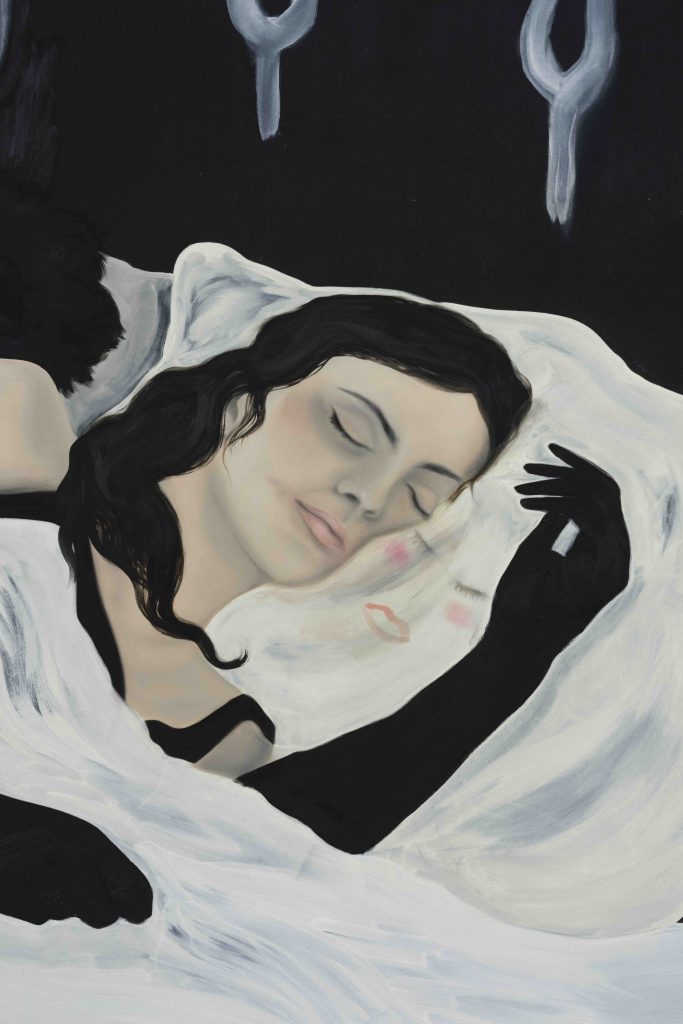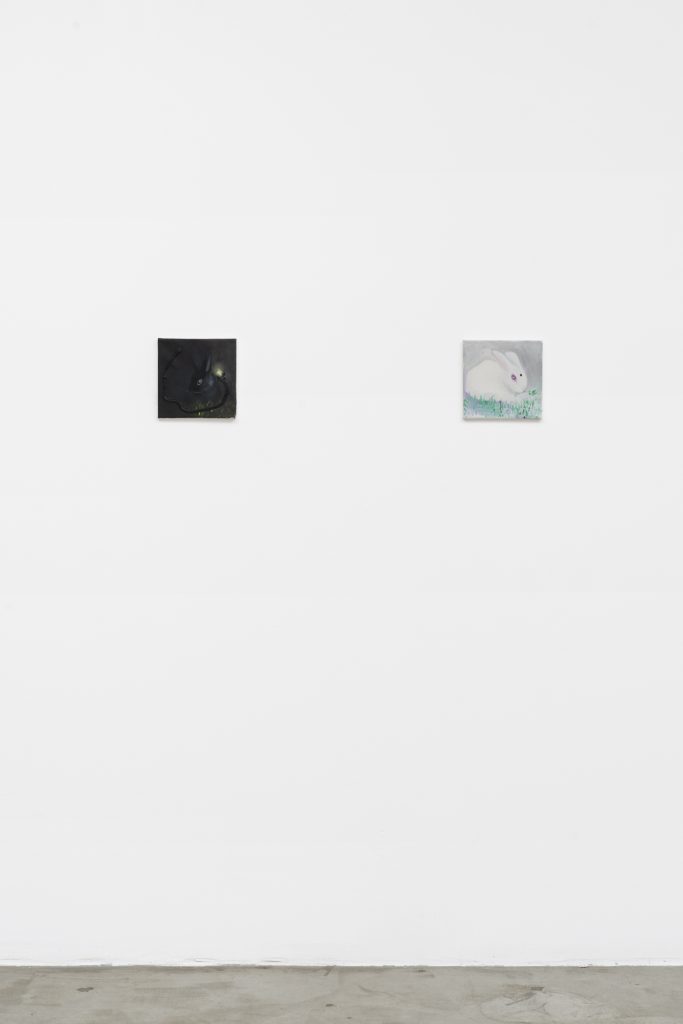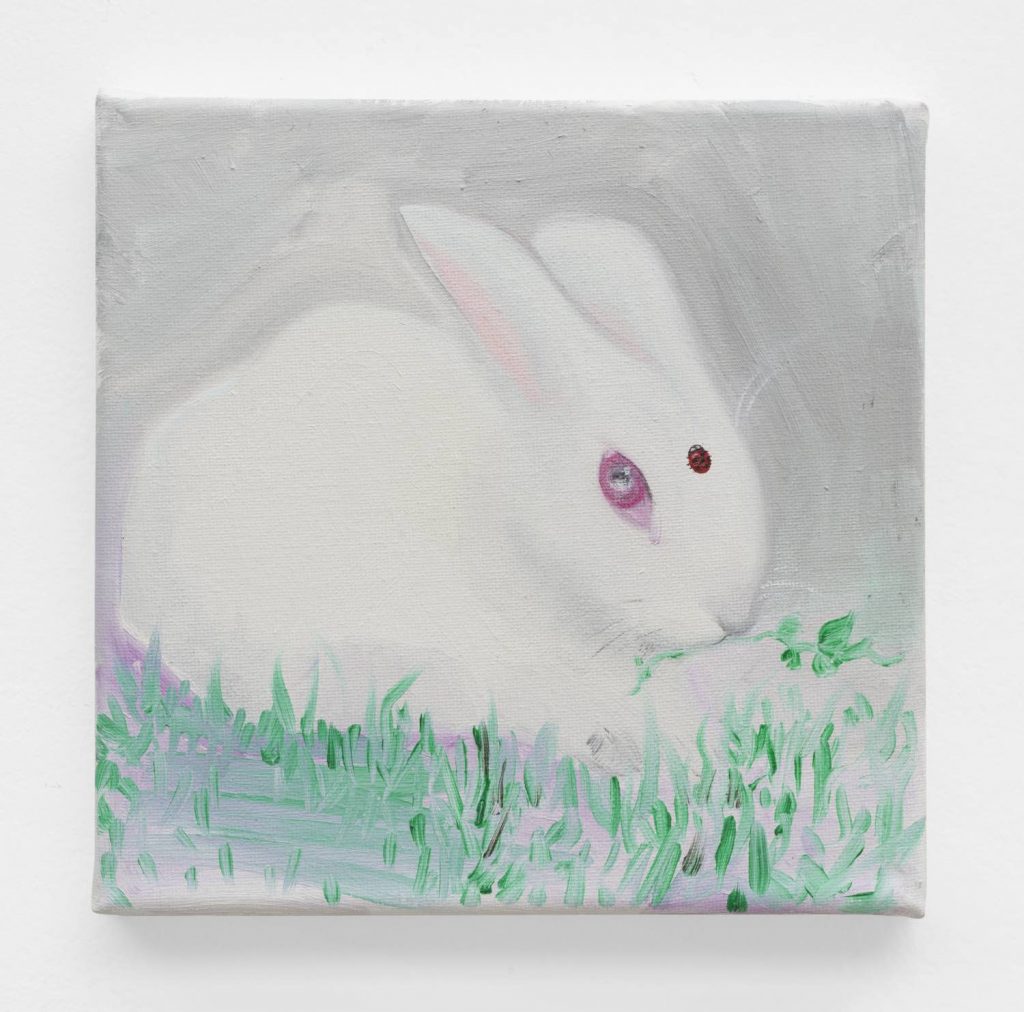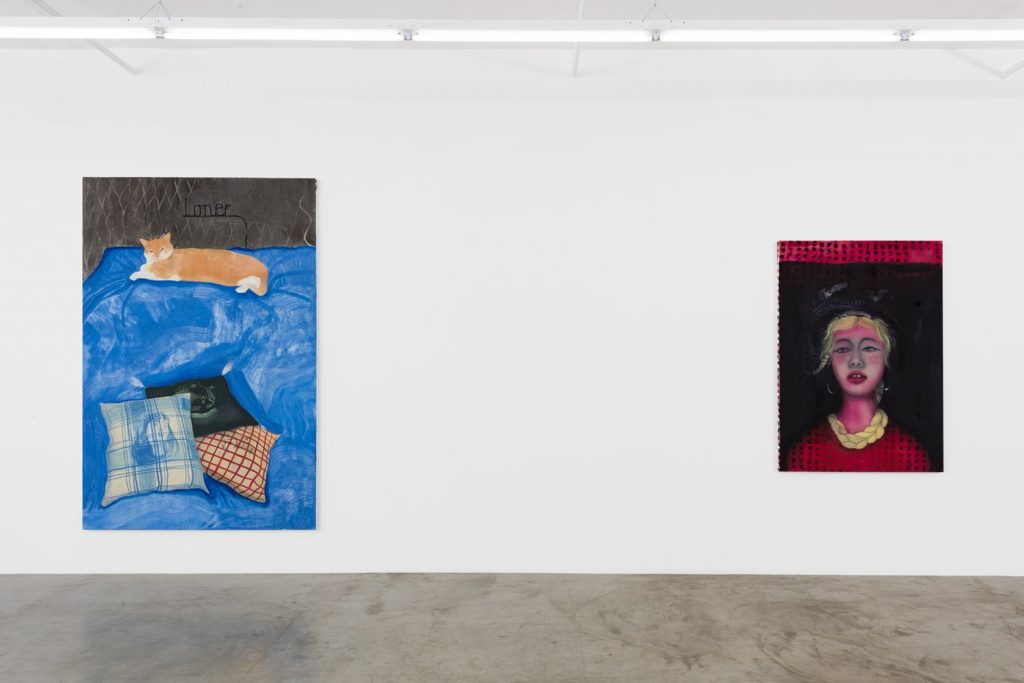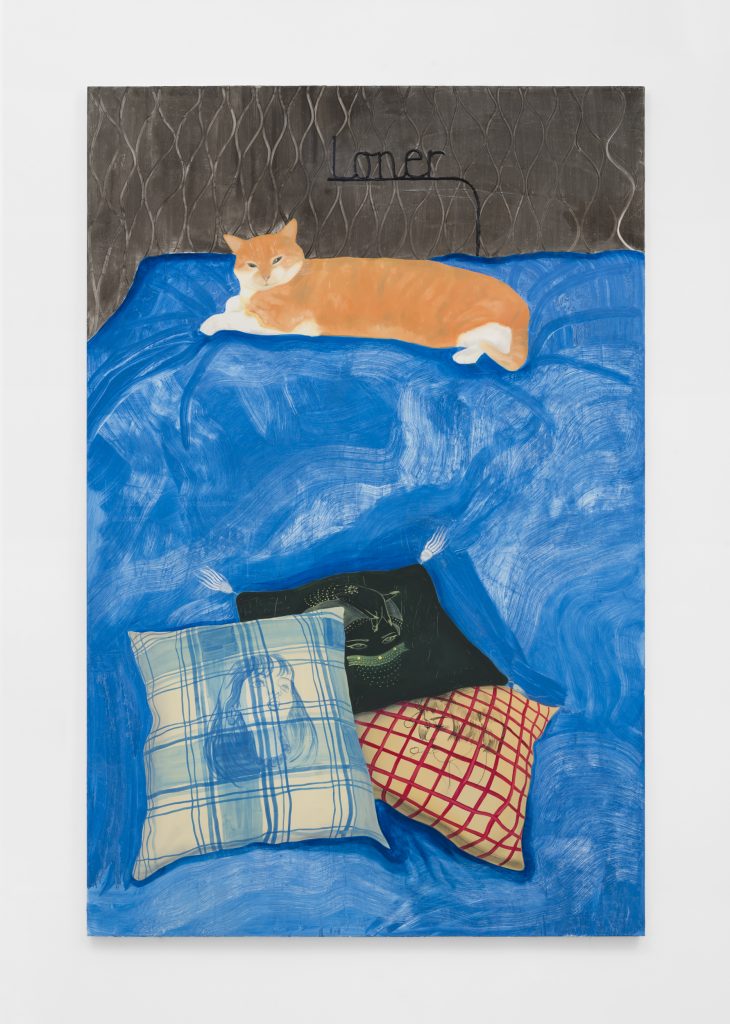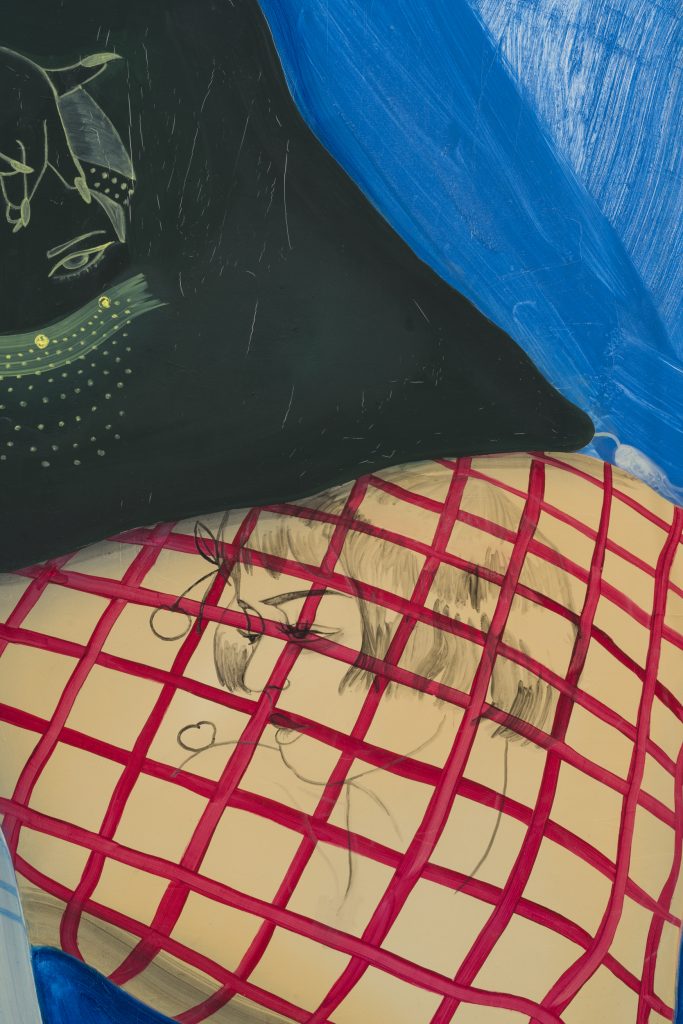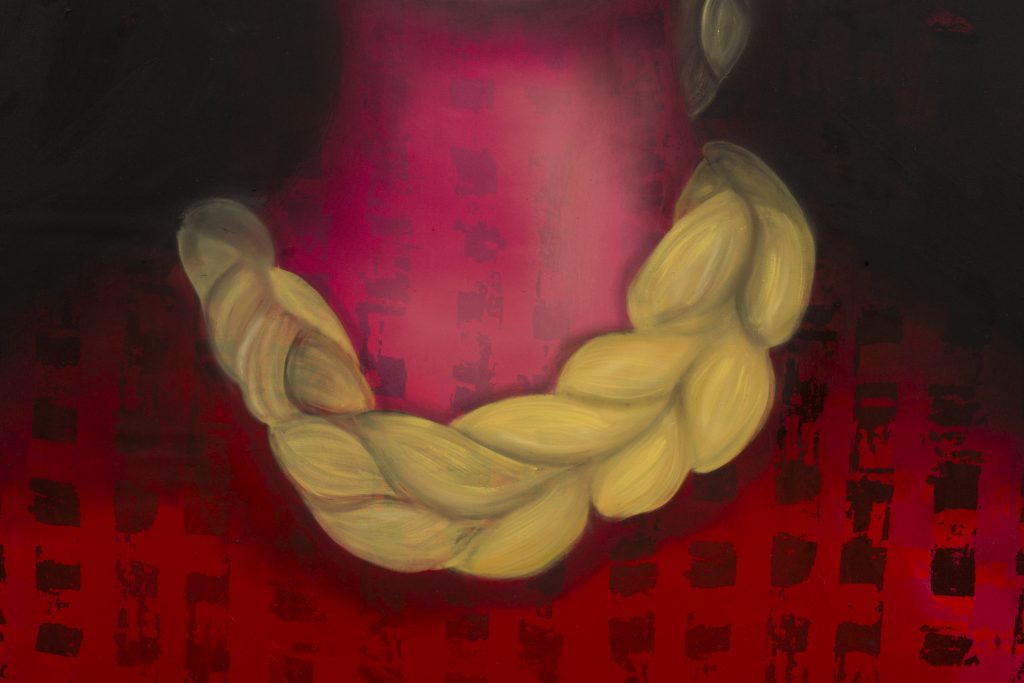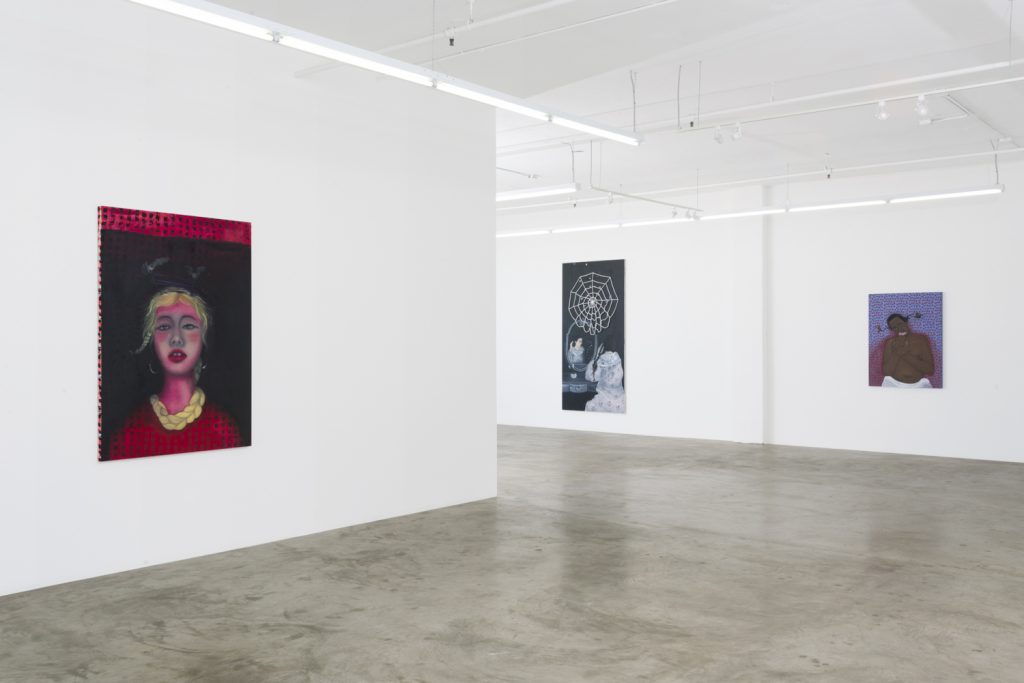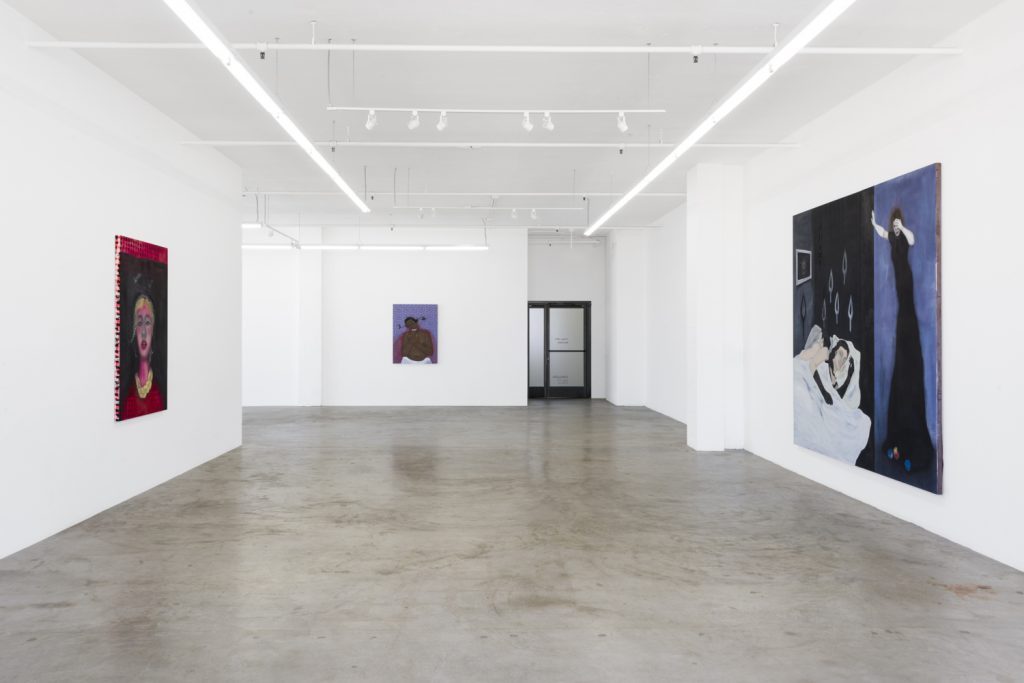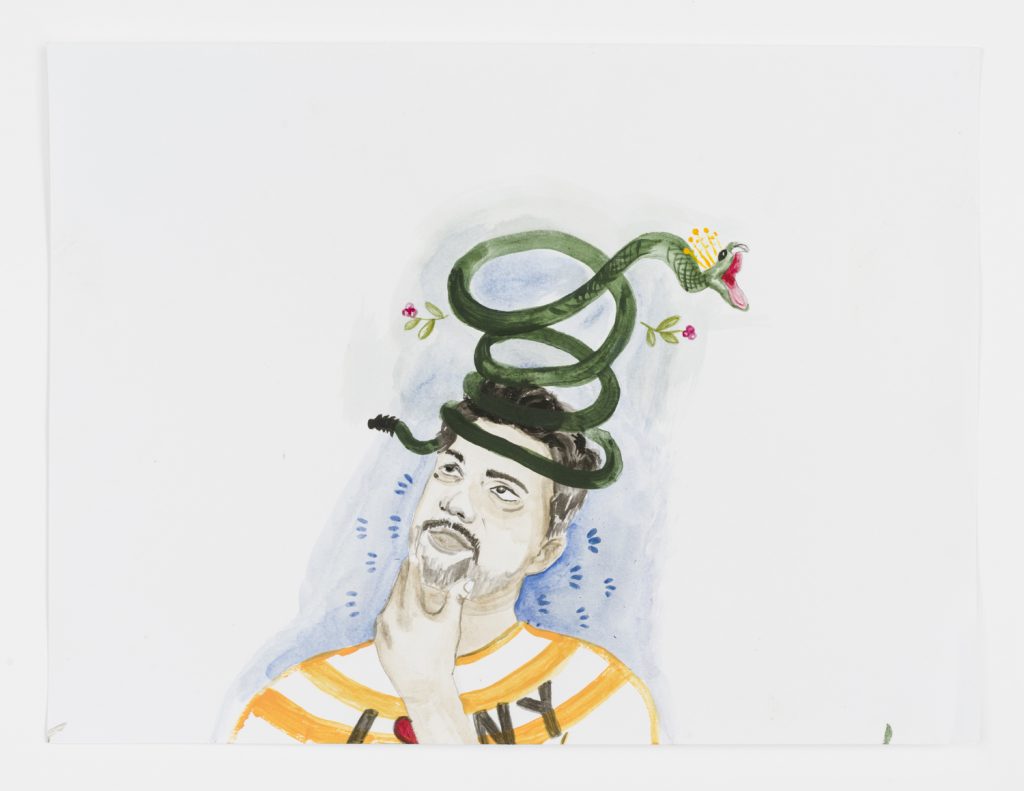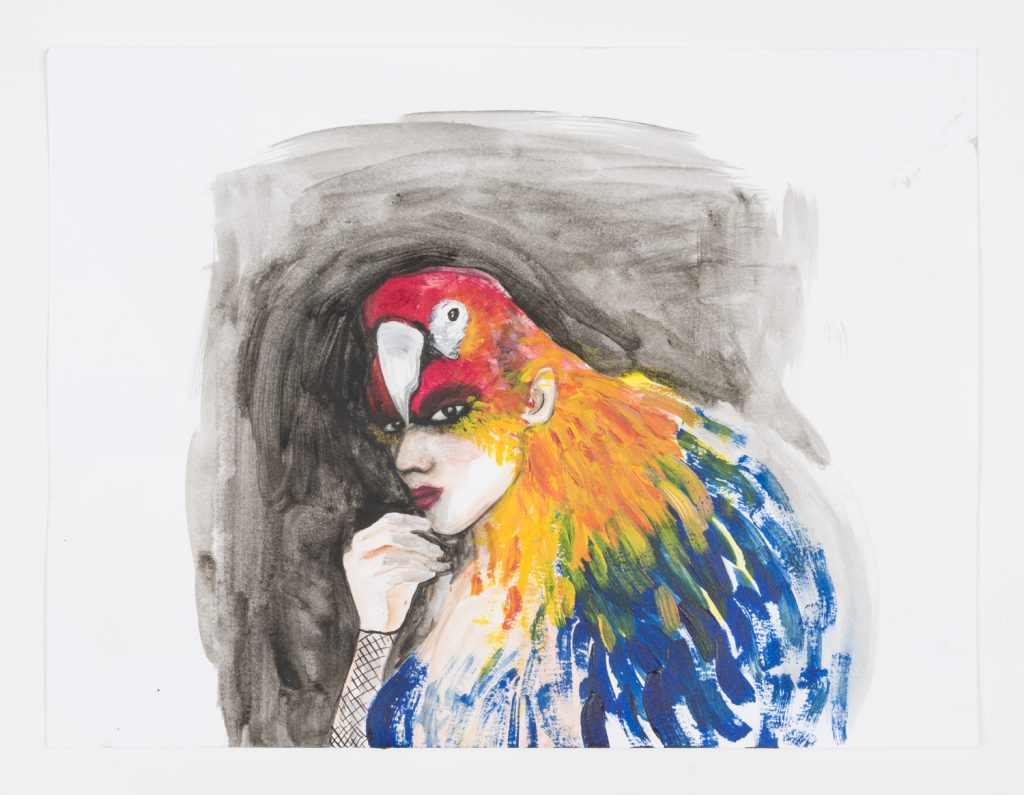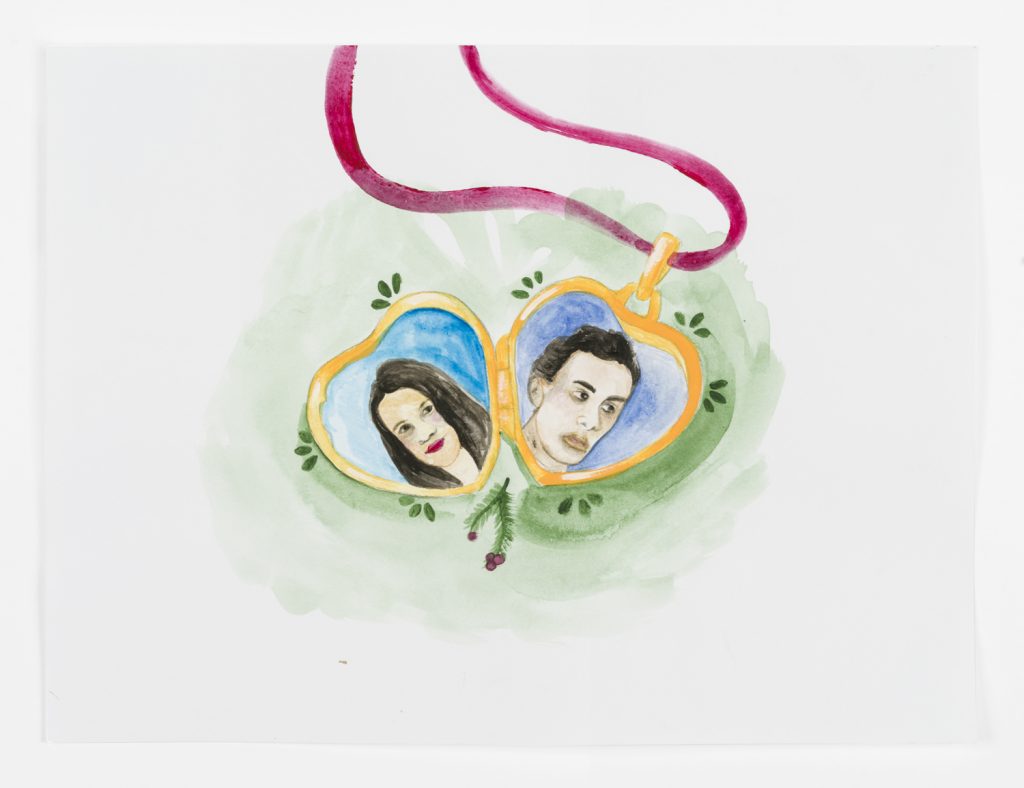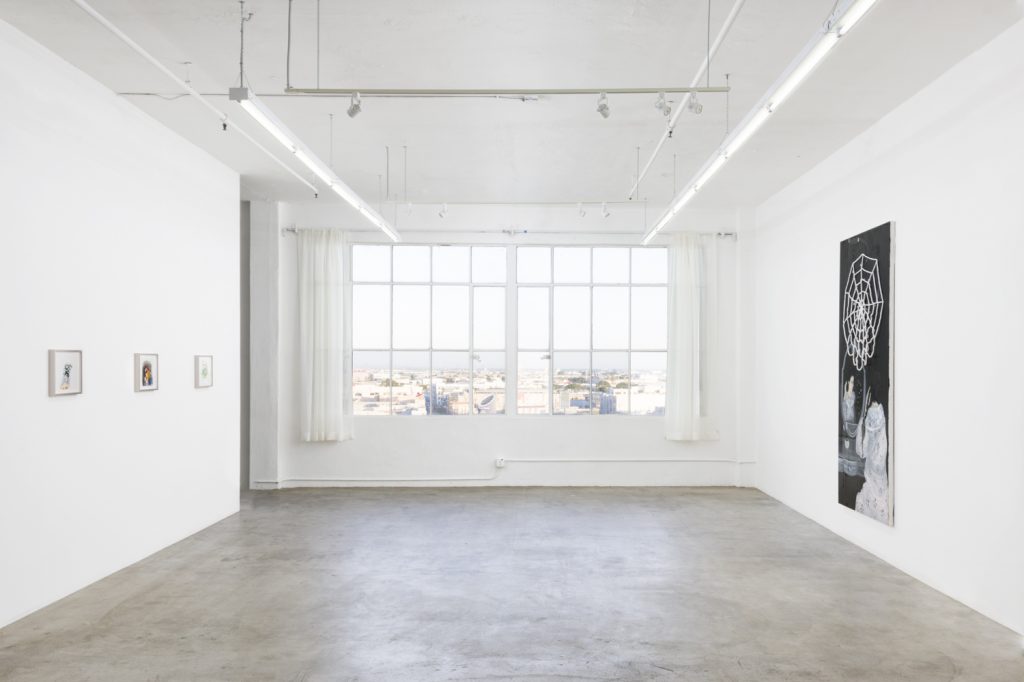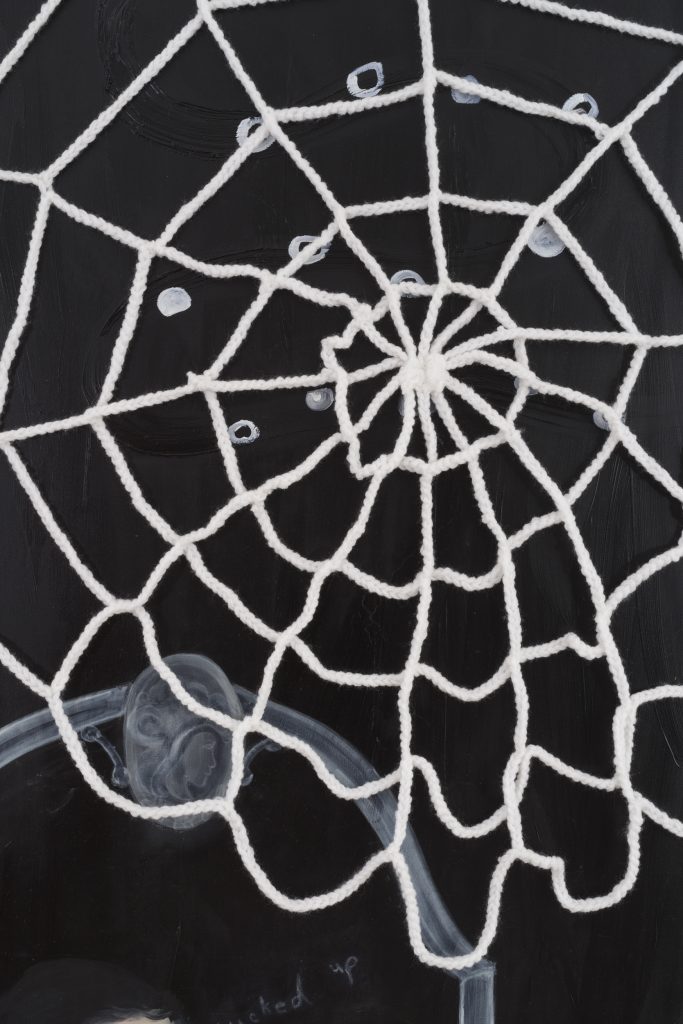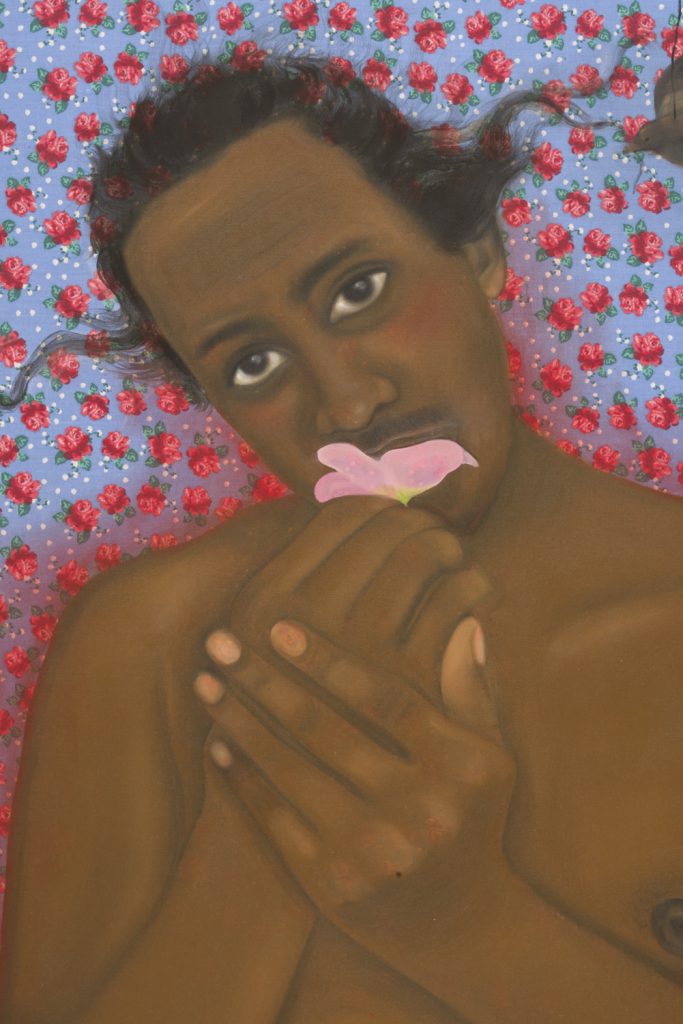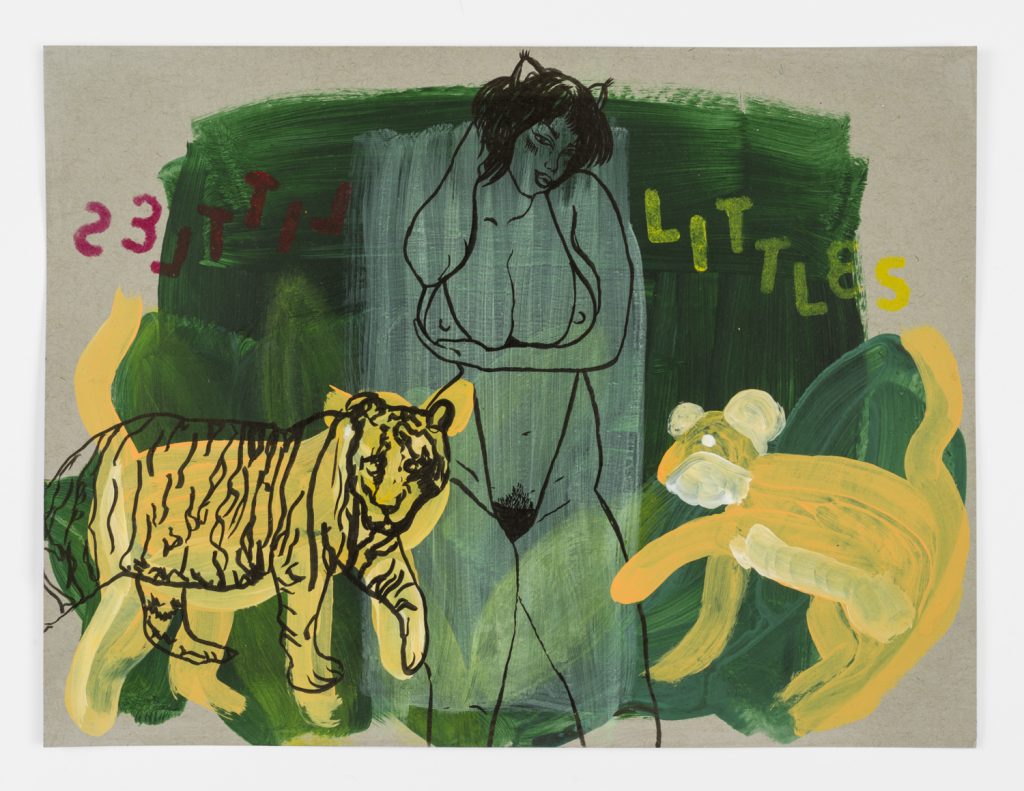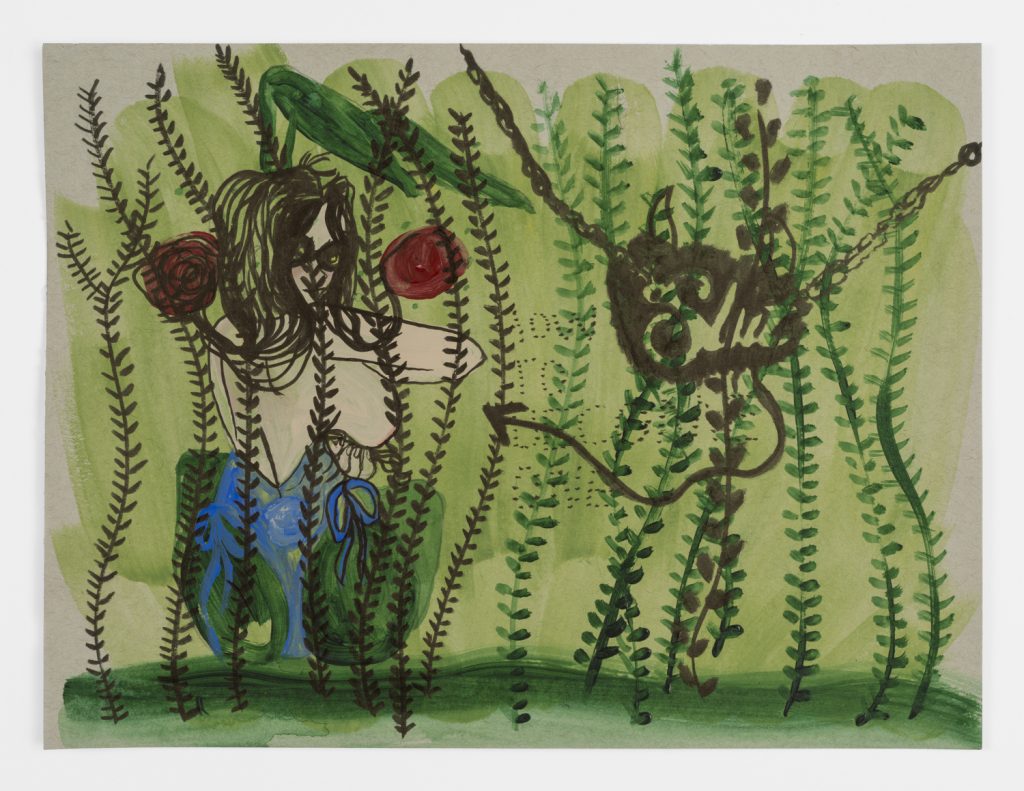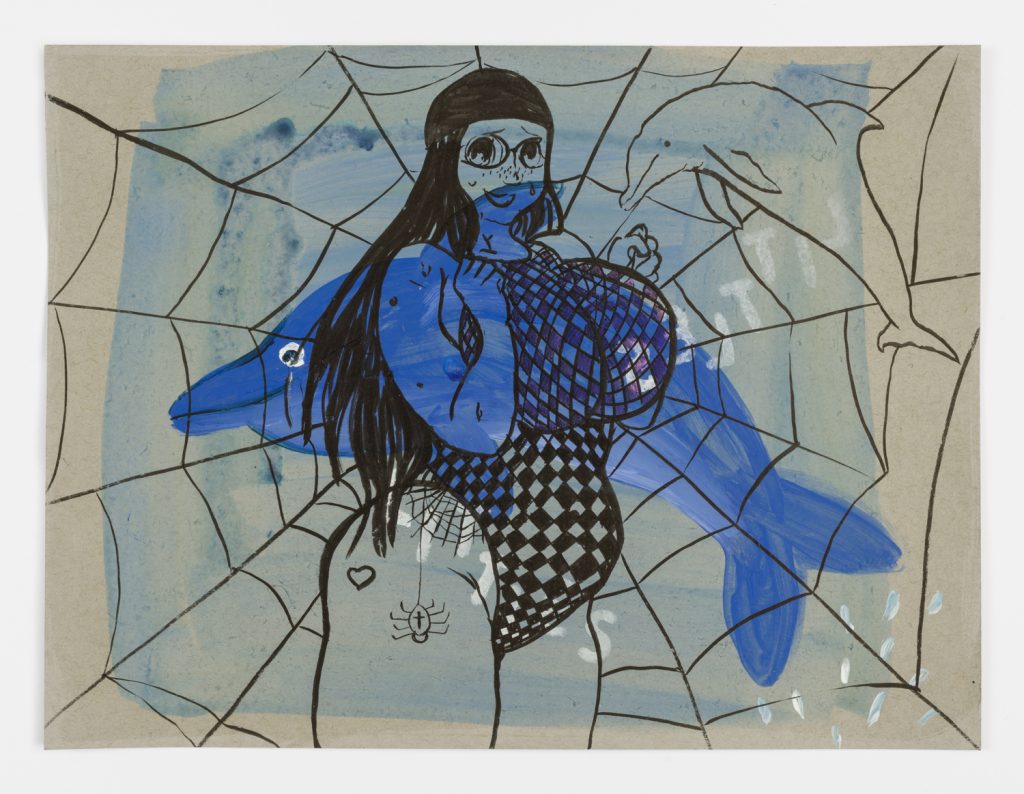 he is the sweetest peach to fall but I don’t like peaches at all
he is the sweetest peach to fall but I don’t like peaches at all2019
Oil on fabric
Diptych: 96 x 63 in (left), 96 x 48 in (right)/
243.8 x 160 cm (left), 243.8 x 121.9 cm (right)
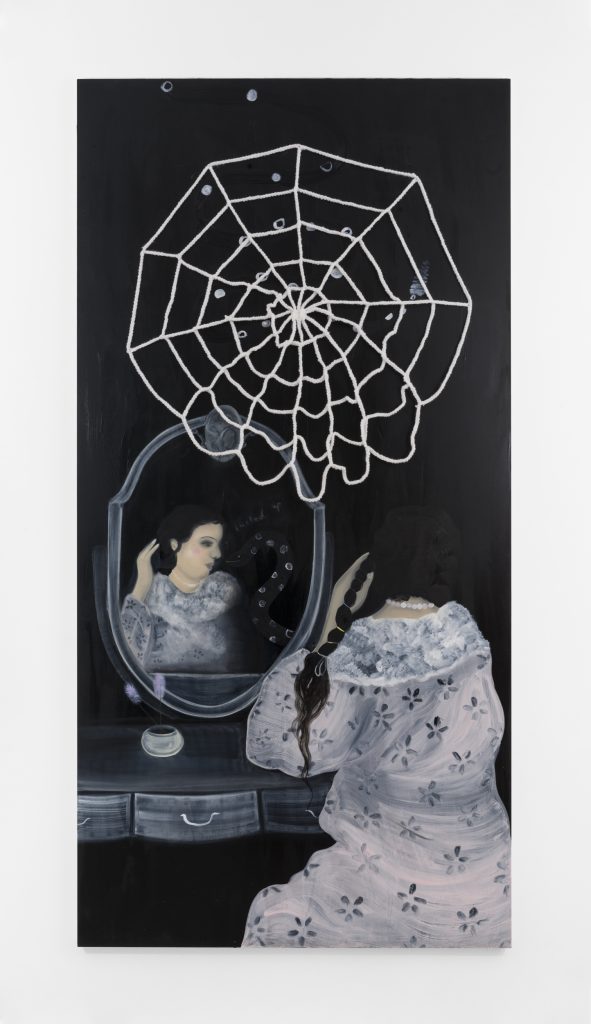 “Die dunkelste Stunde ist kurz vor Tagesanbruch” (The darkest hour is just before dawn)
“Die dunkelste Stunde ist kurz vor Tagesanbruch” (The darkest hour is just before dawn)2019
Oil on fabric, knitted wool
96 x 48 in / 243.8 x 121.9 cm
chasing rabbits is Katja Seib’s first exhibition at Château Shatto, opening on September 21, 2019, and celebrated with a reception from 6–9pm. Born and trained in Düsseldorf and living in Los Angeles, the occasion also marks Seib’s first solo presentation in the United States.
In Katja Seib’s absorbing paintings, the artist presents entanglements of observational reality and illusion. Seib renders a material world that centers on human subjects, while encouraging traces of memory and projections of psychology to interrupt these scenes.
Working primarily in portraiture, Seib’s paintings carry intimate narratives and quiet dramas, suggesting the latent symbolism and simmering psychology that form the undercurrents of empirical experience. Her work dispels the boundary between what is objectively apparent and illusions that articulate emotional or psychological swelling. To borrow phrasing from T.J. Clark, Seib’s paintings feast on the ‘ability painting has, perhaps more than any other means of representation, to imagine the world transfigured.’*
Often painting on raw hessian and non-traditional surfaces, such as patterned textiles, Seib urges an interplay between surface texture and brushwork, and in doing so, allows these textiles to perform different roles within a picture. In strange without a stranger, a red nimbus surrounds a male subject. This vermillion glow falls off into the patterned background, connecting the figure to the textile that hosts him. The large untreated areas of the red floral patterning on a blue ground appear as a surface behind the figure, possibly wallpaper. Within the figure, Seib subdues the bright textile with white paint and incorporates it as patterning in the briefs worn by her subject.
Any single work of Seib’s tends to flicker in tone. An apparent innocence of the subject in strange without a stranger is suggested through tender eyes. This is drawn into question by the presence of the birds, who might appear to initially endorse this reading of the seated man, but the strings that suspend the creatures introduce a sinister possibility. The flower is also represented at odds with itself, as something natural and singular, on the one hand, as well as rote and synthetic, on the other.
Impressions, reflections and residues recur throughout this body of work. In the one diptych in the exhibition, he is the sweetest peach to fall but I don’t like peaches at all, memory is introduced alongside the moment that recalls it. In this brooding scene, several physical impressions and psychological transferences play out. The work presents a spliced temporality in which a female figure on the left panel sleeps on a bed with her back turned to her companion. The smear of her makeup leaves an impression of her face on a white pillowcase and black gloves are pulled past her elbows. The imprint of makeup on the pillowcase offers a symbolic conversion that is present in Renaissance painting, in which tools of vanity can transform into instruments of insight. On the right panel, a female figure who shares the likeness of the sleeping woman wears similar gloves in white. This negative doubling in an environment of sleep brings forward the question of permeability between consciousness and what underlies it.
Significantly, doubling occurs on a material level, too. The two panels making up the diptych are stretched with two different fabrics, amounting to two different surfaces and suggestive of two distinct realities. The lengthened figure on the right holds her head in one white-gloved hand and leans with the other against a black backdrop that originates from the left panel. The bed on the left panel makes a small incursion onto the right, creating passages from one projection of reality to another.
Seib’s tendency to deposit short clips of language in her work is also captured in he is the sweetest peach to fall but I don’t like peaches at all. The same phrase that titles the painting is scripted in cursive text and framed above the sleeping pair. This moment produces a tonal rupture that frequents Seib’s work, in which an emotional disturbance gives way to bursts of levity or wit. The placement of a discarded peach at the bottom of the work furthers this cycle of melancholy that tips towards humor. In 7 lifes (I been different people many times), the word ‘loner’ is applied directly from the paint tube onto the face of the painting and is suspended above an adult cat, a creature notoriously insouciant in nature. In a steep composition, three clustered plaid cushions are arranged together and each holds an outline of a portrait. The figures are trapped in these discrete domestic objects, vulnerable to separation with the happily-solitary cat as their dismissive audience.
Alongside five oil paintings of significant scale are a grouping of framed works on paper and two small, square canvases. It is in these two smallest paintings that the title of the exhibition is given literal recognition. The metaphorical suggestion of ‘chasing rabbits’, however, hovers over the show in its entirety. Seib’s paintings revel in the mind’s tendency to wander off course; to slip and skid; to elaborate on the material world with interior commotion.
*T.J. Clark, Heaven on Earth: Painting and the life to come, Thames & Hudson, 2018.
Katja Seib (born 1989, Düsseldorf, Germany) studied at the Fine Art Academy of Düsseldorf. Her first solo exhibition, dear diary, opened at Sadie Coles HQ in 2018. Seib’s work has been featured in several exhibitions including Group Show at dépendance, 2019, and Salon des Amateurs, a presentation of works by the pupils of Peter Doig and Tomma Abts, at Tramps London, 2017. Seib’s works has been reviewed and featured in Artforum and Vogue.


